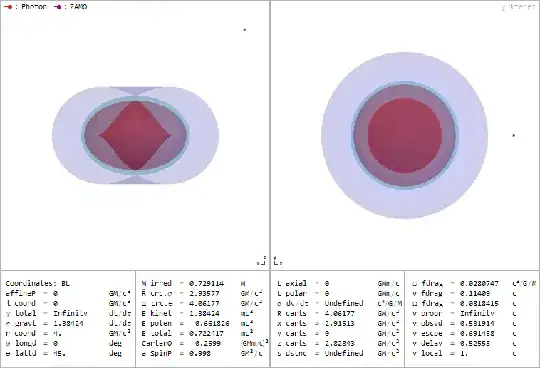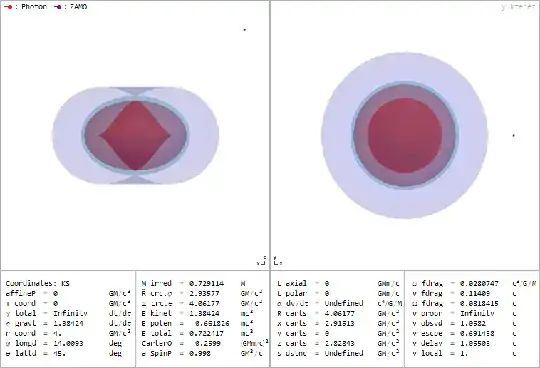I'm learning about the Kerr metric and Kerr black holes from the book "General Relativity: An Introduction for Physicists, M.P.Hobson" and I'm interested in an interpretation for the equatorial geodesics. In the book it keeps saying that the $\phi$ and $t$ coordinates are "bad" coordinates. This is portrayed in the geodesics as $\dot \phi \propto \frac{1}{\Delta}$ and $\dot t \propto \frac{1}{\Delta}$ so as $r \rightarrow r_+,r_-$ the temporal and angular derivatives diverge. This is shown in the following figure in the book
Here I understand the behaviour of a free falling object from infinity, as the object approaches the outer event horizon, a far away observer would see the object orbit the black hole indefinitely and never go inside it. However, I don't understand why once it crosses the outermost event horizon the object would appear to rotate in the opposite direction and same with the time. It seems that the object would be rotating and moving through time in a negative direction. How can this be? Am I misinterpreting something?
Other than that, the book presents the Eddington-Finkelstein coordinates as a fix for these "bad" coordinates. Is there an easy way to derive the geodesics using this coordinate system? In this case what would the difference be between the new graphs and the ones shown here?
Lastly, in my general relativity course they made us use a code that numerically calculates the equatorial trajectories in a Schwarzschild black hole and we could see how using a far away point of reference a free falling object could never cross the event horizon but using the proper time the object crosses the horizon, can something similar be done for this metric?


